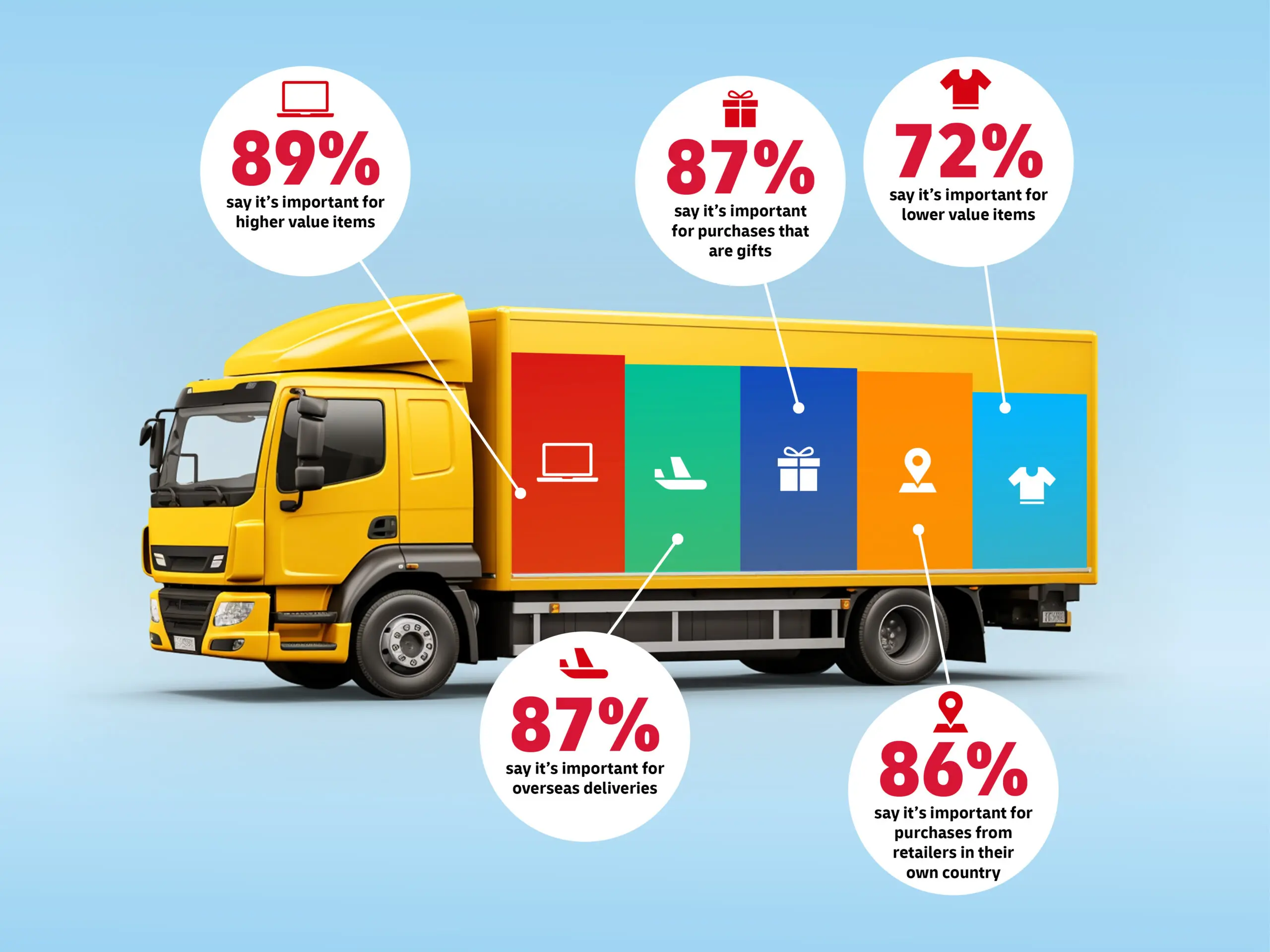How can your people perform at their best if communication isn’t inclusive?
By Sally Pritchett
CEO
Inclusion isn’t an add-on. It’s a business-critical part of how we communicate, lead and perform.
Everyone has the right to be seen, heard, valued and respected at work. Things like gender, ethnicity, religion, sexual orientation, age or other characteristics should not negatively affect how someone is treated. There is a clear ethical obligation to create a workplace where everyone is treated with fairness and respect – but there’s a strong commercial case too:
- Forbes reports that employees who feel they belong are up to 3.5 times more likely to bring their full potential to work – with even greater impact for under- and misrepresented groups.
- CIPHR Forester backs this up, identifying belonging as a performance driver. 80% of those who feel they belong report higher motivation, leading to a 56% increase in job performance.
- Mercer finds that employees who can bring their authentic selves to work are twice as likely to trust their organisation and five times more likely to be satisfied with no intent to leave.
Even with all the evidence behind it, inclusion and belonging still aren’t the reality for everyone. Around 1 in 4 employees say they don’t feel they belong. This is a gap we believe better communication can help close – starting with a few key areas:
Get set for success
How an employee feels when they join a company can set the tone for how welcome they feel. According to HR Magazine, just 76% of black and Asian employees feel welcomed when they join, in comparison to the significantly higher 85% of white employees. Reviewing your onboarding processes could surface opportunities for improvement.
Giving employees a voice
According to the Edelman Trust Barometer, a quarter of employees feel they don’t have a voice within their organisation. From employee satisfaction or pulse surveys to listening groups, employee forums, ERGs and taskforces, there are many ways to help shift from one-way dialogue to two-way communication.
Ensuring communication is inclusive, accessible and authentic
Whether it’s reviewing language use, font choice, colour contrasts or ensuring there are adequate channels that reach everyone in the organisation, there are so many small but intentional actions organisations can take. Sometimes simple word selection like replacing lunch break with rest break to acknowledging nightshifts or removing unnecessarily gendered references in policies or communication can make employees feel more seen and valued. You can check out our guide to help you here.
Raising awareness and building better allyship
Belonging isn’t universal. When people don’t feel welcomed, it not only affects their engagement but their confidence and ability to contribute. It’s important to acknowledge employees from under and misrepresented communities have a different experience of work. Whether it’s the way they access meaningful work or their everyday experience at work there are big equity gaps. Leading campaigns to educate and raise awareness of active allyship can make a huge difference to colleague support, psychological safety levels and reduced microaggressions and bias. Check out this campaign we developed for one of our clients to foster belonging.
Want to dig a bit deeper?
Take our Inclusion Diagnostic – built for internal communicators who want to check how inclusive their communications are and where there are opportunities for improvement. It only takes a couple of minutes and gives you tailored insight with practical next steps. Take the diagnostic.
Need to build a more inclusive workplace where employees can feel they belong?
We see the impact of clear, inclusive communication every day through our THRIVE methodology – a practical framework that helps organisations build fairer, healthier and happier workplaces. One of its six pillars is Inclusion, focused on helping employees feel genuinely valued and respected. If you’re working to strengthen inclusion and belonging in your organisation, THRIVE is a great place to start.
Exceptional workplace cultures don’t happen by chance, they’re built through intentional, inclusive and inspiring communication.
We can help you:
- Simplify and articulate your existing values in a way that helps everyone understand the expectations on them
- Launch or re-launch your values in a way that brings fresh energy, engagement and alignment
- Keep your values alive through behaviour change, leadership alignment and consistent, embedded communication
There’s no one-size-fits-all when it comes to fostering inclusion. That’s why we offer three ways to work with us – depending on where you are now, and where you want to get to.
Activator – Have a story you need to tell? We help simplify complex ideas, shape strong narratives and build campaigns that bring everyone with you. Book a call to discuss your brief.
Pathfinder – Struggling for budget but need direction? Join our community of passionate changemakers and access free guides, tools and events. Sign up to join Work Wonders here.
Co-creator – Already have an in-house team or agency but need fresh thinking? Tap into our advisory services to bring in external perspective and energy. Let’s talk about your challenges, book a call here.
HR is under pressure – and the pressure isn’t easing. Here’s how comms can help
By Sally Pritchett
CEO
The pressure on HR is rising. Strategic communication can help carry the weight.
There’s growing pressure in HR – and it’s not easing any time soon. 64% of HR professionals say they’re experiencing near-constant stress. Budgets are tight. Workloads keep growing. And the pace of change is relentless – legislative, cultural, technological. The HR function is stretched, often seen as a cost centre rather than a strategic driver, and yet still expected to hold the organisation together.
That reality came through clearly at a recent We Do Group event, where our CEO Sally joined a room full of passionate HR leaders to talk about change, culture and communication – and how the pressure on HR is rising, even as expectations grow.
We know that HR can rise to the challenge – with communication as a strong and strategic ally.
Change is happening – whether you’re ready or not
Change is already happening – the question is whether it’s happening to you or with you. And whether it’s planned or reactive, it always ends up at HR’s door.
Right now, leaders are being asked to guide people through uncharted territory – AI, instability, uncertainty. That calls for a different kind of leadership. Not just confident decision-makers, but emotionally intelligent, authentic ones. HR has a powerful role to play in helping those leaders listen better, connect more deeply, and create the safety their people need. But HR can’t do it alone.
That’s where communication comes in – as an expert partner in guiding people through change. While the destination might stay the same, how we get there will keep shifting. Comms helps teams stay connected to the golden thread of purpose and values along the way.
Done well, communication can unite rather than divide. It can shape trust, bring clarity and give people something solid to hold onto, even when the path is uncertain.
Repositioning HR: From compliance to culture
HR needs a rebrand. It’s still too often positioned as a back-office function – focused on policy, compliance and admin. But HR is culture and separating the two no longer makes sense. Every day, we see HR teams being asked to drive culture – to lead on engagement, inclusion, wellbeing and values – without always being given the recognition, resource or influence that should come with it.
If we’re serious about people and culture being a business priority, we have to start treating it like one. That means:
- Stop reporting on outputs. Start talking about impact.
- Don’t just ask for budget – show the cost of not investing in people and culture.
- Use storytelling to land what data alone can’t.
- Move the conversation on from hybrid vs office – and focus instead on proximity, connection and leadership that truly listens.
It also means tightening the loop between HR and internal comms. Because how you say things can be just as important as what you say – especially in moments of change.
People are listening – even when you think they’re not
In a hyper-connected world, everything you say internally can and will be seen externally. Employees are customers. Suppliers are stakeholders. Very few messages stay internal these days and that makes transparency non-negotiable.
If you only communicate when things are going well, you’ll lose trust when things aren’t. Hard news doesn’t damage trust – poor communication does. When it’s time for tough decisions like redundancy during difficult economic times, your people should have already been on the journey to understand the context, not hear it for the first time on the day of an announcement.
It’s much easier to get a message right the first time than to try and rebuild trust after it’s broken.
What HR needs now
The HR function looks different in every business – but the pressure is felt everywhere. Whether you’re flying the flag for culture in the boardroom or delivering the tactical day-to-day, you deserve better tools, stronger influence and genuine partnership.
Change is happening either to you or with you. The difference often comes down to whether comms is working with HR – or working in parallel.
At Something Big, we understand HR. We know the pressure you’re under – and the passion and potential that drives you. We’re here to support you with communication that’s commercially minded, consistent and comprehensive, right when you need it most. Let’s talk about your people and culture challenges – and how we can tackle them together.
If you work in HR and you’re looking for insight, connection and fresh thinking, you’re not alone. Our Work Wonders community is built for people like you – passionate about people and culture, and ready to share ideas, challenges and support. Join us and be part of a growing network of HR and comms professionals making change happen.
How can employees live by values they don’t know, understand or see in action?
By Sally Pritchett
CEO
Clear and role modelled values have the power to shape workplace culture – but a growing disconnect is fuelling mistrust.
We can all agree that having clearly defined and communicated values, that are lived and respected by all and consistently used to drive decision making and guide direction, is the bedrock of a rich workplace culture. Sadly though, there’s a growing misalignment and it’s causing challenges from behaviour and performance to trust and even wellbeing.
So, what’s going wrong? Let’s take a closer look.
The communications gap
There remains a gap in clear articulation and communication of values to employees. According to Gallup, only 23% of employees feel informed about their company’s values. That’s backed up by Cezanne HR who report that 60% of employees don’t know or don’t feel aligned with their organisation’s values.
The culture misalignment
Even when employees do know the values, this can surface other challenges. According to HR Magazine just 18% of employees feel their organisation’s stated values are strongly aligned to the reality of its culture causing them to quickly lose faith in leadership and culture.
The leadership disconnect
The gap widens when it comes to executives and leadership, 85% of whom believe they “effectively communicate the company’s values” whilst according to Ge-Ipsos only 62% of entry level employee agree, adding to mistrust and disengagement.
The unequipped squeezed middle
And when it comes to trust, Line Manager behaviour is seen as the single most important driver of employee trust and yet only 26% of managers say they’ve had any values-based support or communication training.
The burnout risk
Employees need to see how values apply to their day-to-day work, yet Mercer report that one in every five who feel at risk of burnout attribute it to a misalignment between their own values and the values of their employer.
Internal comms leaders might be tired of creating endless values materials that have become wallpaper but not really shifted belief or behaviour, it’s clear that values remain at the heart of workplace culture.
Bringing your organisational values to life
So, what’ the answer? It’s not more posters that launch but don’t land or another top-down broadcast that doesn’t win hearts and minds. Instead, we work with our clients to create deeper storytelling, more inclusive co creation or that enable employees to feel seen and recognised and equip critical middle managers with the confidence to talk with their teams about values in everyday conversations.
Want to dig a bit deeper?
Take our Values Diagnostic – built for internal communicators who want to check what’s landing and where the gaps might be in their values comms. It only takes a couple of minutes and gives you tailored insight with practical next steps. Take the diagnostic.
We see the impact of clarity every day through our THRIVE methodology – our framework for helping organisations build fairer, healthier and happier workplaces through better communication. One of its six pillars is Values – focused entirely on how people connect and align their behaviour to your organisation’s values. If you’re struggling to make your values come to life, this is a good place to start. Read more about THRIVE.
Need to build engagement and alignment to your values?
Exceptional workplace cultures don’t happen by chance, they’re built through intentional, inclusive and inspiring communication.
We can help you:
- Simplify and articulate your existing values in a way that helps everyone understand the expectations on them
- Launch or re-launch your values in a way that brings fresh energy, engagement and alignment
- Keep your values alive through behaviour change, leadership alignment and consistent, embedded communication
There’s no one-size-fits-all when it comes to values comms. That’s why we offer three ways to work with us – depending on where you are now, and where you want to get to.
Activator – Have a story you need to tell? We help simplify complex ideas, shape strong narratives and build campaigns that bring everyone with you. Book a call to discuss your brief.
Pathfinder – Struggling for budget but need direction? Join our community of passionate changemakers and access free guides, tools and events. Sign up to join Work Wonders here.
Co-creator – Already have an in-house team or agency but need fresh thinking? Tap into our advisory services to bring in external perspective and energy. Let’s talk about your challenges, book a call here.
How can your employees support your strategy if they don’t know the destination?
By Sally Pritchett
CEO
Strategic clarity shapes business success – and communication can make or break it.
If employees aren’t clear on where the business is heading, how can they help get it there or contribute ideas to move it forward?
According to the 2024 IC Index, almost one in five employees were not clear on their organisation’s strategy or how their performance could contribute to it. That’s hardly surprising when, according Harvard Business School only 28% of execs and managers can list their organisation’s top three strategic priorities.
Have we got lost in jargon and over-complication to the point where we’ve lost the golden thread? Or is the world moving so fast that yesterday’s strategy is no longer relevant, and we’re all simply trying to keep up?
Whatever is causing this disconnect, the result is the same. Strategies don’t fail because they’re wrong, they fail because they’re misunderstood.
This is where communication comes in. Effective and impactful communication can translate strategy into something meaningful and memorable for employees to get behind.
If strategy is the destination, communication is the map
A quick way to find out how well you’re communicating your strategy might be to choose a handful of randomly selected cross-functional and frontline employees and ask them to describe what your business is trying to achieve in one sentence. Then ask how their own role, work and performance contributes to that goal. And if you’re feeling brave, ask when they last thought of a way the business could get there quicker – and who they told.
Want to dig a bit deeper?
Take our Roadmap diagnostic – designed for internal comms professionals who want to understand what’s landing and where their strategy comms might need a boost. It only takes a couple of minutes and gives you tailored insight plus practical next steps.
We see the impact of clarity every day through our THRIVE methodology – our framework for helping organisations build fairer, healthier and happier workplaces through better communication. One of its six pillars is Roadmap – focused entirely on how people connect with your organisation’s direction and understand their role in getting there. If you’re struggling to make your strategy stick, this is a good place to start. Read more about THRIVE.
Need to build clarity and momentum around your strategy?
Exceptional workplace cultures don’t happen by chance, they’re built through intentional, inclusive and inspiring communication.
We can help you:
- Set your strategy up for success by developing a clear narrative with compelling language and simple, memorable stories
- Launch it with impact through creative internal campaigns that get people engaged from day one
- Keep it alive through behaviour change, leadership alignment and consistent, embedded communication
If you’re looking to scale up how you communicate your strategy and direction, there are three ways we can support you:
Activator – Have a story you need to tell? We help simplify complex ideas, shape strong narratives and build campaigns that bring everyone with you. Book a call to discuss your brief.
Pathfinder – Struggling for budget but need direction? Join our community of passionate changemakers and access free guides, tools and events. Sign up to join Work Wonders here.
Co-creator – Already have an in-house team or agency but need fresh thinking? Tap into our advisory services to bring in external perspective and energy. Let’s talk about your challenges, book a call here.
Employee engagement is falling in 2025 – is it time for a workplace reset?
By Sally Pritchett
CEO
The data paints a clear picture of a workplace under pressure. Strategy & Insights Director Tor Radford explores whether this could be the reset moment we need.
Let’s face it, the state of the nation and the world is pretty dire right now. Every which way we turn, there are reports of uncertainty over jobs, the rising cost of living and how unhappy, stressed and lonely we are.
Each year, Gallup’s State of the Global Workplace report provides an important snapshot of how people are feeling at work. It’s no surprise that this year it paints a troubling picture. Engagement is down. Manager wellbeing is seriously declining. There is an emotional cost of work. And the underlying cracks in the employee experience are coming harder to ignore.
But Gallup’s findings are only part of the story. Insights from Accenture Life Trends 2025, Randstad Employer Brand Research, and GWI’s Redefining the Workplace show a wider shift underway. People aren’t just rethinking how they work. They’re rethinking what work means.
What people want from work is changing
To understand where engagement is heading, we need to understand what people are really looking for in their working lives.
Randstad’s global data shows employees are no longer driven by salary alone which is surprising in itself given how much costs are rising. Work-life balance, wellbeing, purpose and values are just as important – especially for younger workers.
Work-life balance now tops the list of reasons people leave a job. Gen Z and Millennials rate mental health support and flexible working as key priorities. And while most employers believe they’re delivering on these needs, employees don’t always agree. There’s a growing gap between the promise and what employees actually experience.
Work isn’t just a contract anymore
Accenture describes this change as a shift from transaction to relationship. As they put it, “work has to earn its place in people’s lives now.”
People want roles that fit around life, not the other way around. They want to feel involved, understood, and part of something meaningful. And they expect their managers to reflect that by being human and leading with empathy and clarity.
In this context, Gallup’s reported drop in engagement – from 23% to 21% – is more than just a decline. It’s part of a much larger cultural shift of how we are seeing the role of work in our lives.
“We believe that leaders who see the value of effecting positive change and creating the conditions that naturally raise enthusiasm in their teams will emerge as winners. Those who ignore what’s happening will increasingly notice a lack of dignity at work, resulting in poor culture, work and motivation—and worse outcomes for customers and business growth”
Accenture Life Trends 2025
Managers are struggling to hold it all together
Gallup’s data points to one particular group under growing pressure: managers.
Engagement among managers has dropped to 27%. The decline is even more significant for younger managers and for women.
Managers are expected to drive performance, care for their teams, adapt to change and absorb stress, often without the clarity, support, training or capacity they need.
Why does this matter? Because managers are still the single biggest factor in team engagement – Gallup attributes around 70% of the variance of employee engagement outcomes are down to manager effectiveness. They are the glue that often holds teams together. When they’re disengaged, it cascades. And when they’re unsupported, they struggle to carry both performance and people.
The emotional impact is becoming clear. Life satisfaction is falling. Stress, sadness and loneliness remain high, particularly in hybrid and remote teams. For many managers, the pressure is becoming even harder to sustain and something has to give.
Meanwhile, Gen Z are rewriting the rules
GWI’s Redefining the Workplace report offers another lens. Gen Z haven’t just entered the workforce. They’re reshaping it.
They’re less focused on climbing a corporate ladder and more likely than other generations to value side hustles, creative projects and autonomy. They’re actively seeking connection and community at work, not just a role or salary. And they’re choosing balance over burnout.
They also expect a say in how work works. They want to co-create their role or experience, not just be given a handbook. In that sense, they’re echoing Accenture’s observation: Gen Z employees aren’t just looking for a leader in the workplace, they’re looking for partnerships.
The disconnect is growing, but it’s not just about work
Taking a wider view, this isn’t only a workplace issue. It does seem to be societal.
According to recent reporting in The Guardian, over five million UK adults are now facing financial, housing and health insecurity all at once. That includes many in work. These overlapping pressures will affect how people show up, how they cope and how they engage.
When external stress is high, the internal support systems of work become more important. And when they don’t hold up, employees switch off – emotionally and mentally.
Where do we go from here?
The message across Gallup, Randstad, Accenture and GWI is consistent. Start with people. Rebuilding engagement isn’t about new initiatives or a complete rebuild of your internal structures. It’s about strengthening relationships and routines that shape the everyday moments for employees.
That includes:
Support for managers. Many haven’t been trained. Helping them lead conversations, give feedback and recognise what they need in the moment could be a simple way of creating quick impact and help them feel better supported.
Clearer expectations. Employees need clarity – on what’s expected of them, how their work connects to purpose and what success looks like. That applies just as much to a desk-based employee as to someone on the frontline.
Making wellbeing real. Employees are discerning. Wellbeing can’t just live in a policy or on an intranet page. It has to show up in how people are managed, supported and recognised day-to-day – not like a last resort.
Personalised experience. EVP can’t be one-size-fits-all. Different generations, job types and life stages value different things. Communications and touchpoints need to flex accordingly.
Space to lead, not just deliver. Managers can’t engage others if they’re constantly firefighting. That means protecting their time, wellbeing and ability to support and lead their teams – not just hit targets.
What this means for internal communicators
For comms teams, this moment in time is about more than getting messaging right. It’s about helping businesses reconnect with employees – with clarity, consistency and care.
That might mean:
- Helping leaders speak more empathetically
- Creating moments for listening and dialogue, not just updates
- Making the EVP visible in daily experiences
- Designing comms that build trust, not just awareness
- Creating channels that build connection, not just cascade information
Because when expectations are this high, the way we communicate has to evolve too.
This could be the reset we need
The signals are everywhere. Engagement is dropping. Expectations are shifting. People are tired, but they’re also clear on what they want. And whilst the data may look bleak, it also points to a clear path forward. If this IS the reset moment, I’m not sure we can afford to ignore it.
If you’re rethinking how to connect with your people, you’re not alone. We help organisations translate insight into communication strategies that support culture, engagement and change. Ready to reset how you communicate? Let’s talk.
Five top tips to make your report more accessible
By Sally Pritchett
CEO
Writing a great report is one thing. Making sure it’s accessible for your readers is another.
Accessibility goes beyond font size or colour contrast – it’s also about creating content that people can understand and engage with. And that starts with how we write, structure and design our reports.
Whether you’re creating an annual review, industry insights piece or ESG update, here are five practical ways to make your report more accessible and digestible.
Keep language simple
Complex language, overly long sentences, unfamiliar words – all things that make writing more inaccessible. Using simpler language and keeping sentences clear and concise can make it easier to your audience to stay engaged as they read.
- Swap complex or long words for simpler alternatives (e.g. use ‘help’ instead of ‘assist’)
- Break up long sentences, and write the way you speak
Top tip: Read your content out loud. If it sounds unnatural or clunky, rework it until it flows in a similar way to how you’d speak.
If you’re looking for more ways to write in a clear, inclusive way – not just in reports but across all your channels – our guide to creating authentic, accessible and inclusive communications is a good place to start.
Don’t assume knowledge
Acronyms, industry terms and technical jargon can quickly alienate readers unfamiliar with the topic. If you must include them, always explain the term the first time you use it.
Writing in a way that assumes no prior knowledge isn’t patronising – it’s inclusive. It means anyone, whether they’re new to the subject or an expert, can follow your report without confusion.
Structure matters – break content down
No one wants to read pages of big blocks of text. Well-structured content is easier to scan, understand and remember. Think about what you’re trying to say – and how you can say it in fewer words or in an easier to digest way.
- Use clear headings and subheadings to break up text
- Make information easier to scan with bullet points and numbered lists
- Highlight key messages with callouts or visual elements
Use inclusive visuals
Not everyone processes information the same way. Visual elements like infographics, diagrams and charts can help bring your content to life. However, it’s important to ensure any visuals you use are accessible.
- Choose high-contrast colours and legible fonts
- Avoid using colour alone to differentiate data – also use patterns for each section of a chart or graph
- Add meaningful alt text to images for screen reader users
- Avoid overuse of decorative visuals that distract from your message
Top tip: Consider whether the message would still be clear if the image didn’t load.
Make it keyboard and screen reader friendly
If your report is digital, it should be usable without a mouse. For many readers, that’s not a preference – it’s a necessity.
- Use proper heading styles (H1, H2, etc.) to support screen readers
- Avoid embedding important text in images or PDFs without selectable content
- Ensure links are descriptive (e.g. ‘Download the 2025 Report’ instead of ‘Click here’)
Top tip: Use built-in accessibility checkers, like Microsoft Word’s tool. If possible, ask real users to test your report and provide feedback.
A report that’s easy to read is more likely to be read and remembered. By applying these five tips, you’ll create content that’s more inclusive, more engaging and more effective.
Need support making your next report more accessible?
We’re here to help. Whether you need hands-on design or just want to talk it through, get in touch, or explore our award-winning report expertise and inclusive comms guidance here.
How leading with insights turns data into award-winning reports
By Sally Pritchett
CEO
Following our recent Best Visualisation of Data award win at the DataComms Awards, we’re sharing how to bring data to life in your reports – so it’s not just seen, but understood.
When it comes to writing a report, the first instinct is often to include as much data as possible. But more data doesn’t always mean better communication – not because people don’t care about the data, but because the data isn’t doing enough to care about them.
In today’s digital-first world, where we’re constantly bombarded with information, reports need to do more than simply inform. It’s time to move away from overwhelming data dumps and start leading with insights that drive decisions, inspire action and deliver real value.
Here are some top tips to help you lead with insights in your next report:
Start with the ‘so what?’
You’ve got the data, and you may have even turned it into charts and visuals. Now it’s time to ask yourself, what does it mean? What should your audience take away? That’s where insight comes in.
An insight goes beyond the numbers. It connects the dots, explains why something matters and puts it into context for your reader – for their business, their industry and their priorities.
For example, instead of writing ‘Employee engagement scores dropped 4% this year’, try
‘A 4% drop in engagement suggests teams may be feeling disconnected – highlighting the need for increased leadership visibility.’
Don’t hide the insights
Not everyone reads a report cover to cover. They might skim read, search for the information most relevant to them or just scan the headlines and visuals.
Make sure your insights are easy to find and hard to miss:
- Include a short, punchy introduction or summary that pulls out key insights.
- Start each section of the report with a headline insight and end each section with a summary of key takeaways, actions or recommendations.
- Keep the detailed data to appendices so it’s there if needed but not blocking the story upfront.
Show the story, not just the stats
Even the clearest charts, graphs and visuals can fall flat if they’re not framed with meaning. Data alone rarely changes minds. But data backed by context and meaning? That can have an impact.

Giving the data meaning is exactly what helped our DHL eCommerce Trends Report win Best Visualisation of Data at the DataComms Awards. To bring insights to life, we created a series of visually engaging reports using real-world objects and relatable examples to illustrate key statistics. This made the data more relevant and easier to digest.
Bring your story to life with:
- Callout boxes for key insights and takeaways
- Real quotes or short case studies to humanise the numbers
- Icons or infographics to highlight trends and comparisons
Think about your audience from the start
Reports are more effective when they speak directly to their audience’s needs. So before you put pen to paper (or fingers to keyboard), ask yourself:
- What does your audience really want to know?
- What would make this report useful for them?
- How can these insights help them?
Build your report around what they need – not just what you have.
Be brave
It’s tempting to play it safe in reporting: present the facts, avoid interpretation, steer clear of conclusions. But in doing so, we miss the chance to lead. As communicators, our role is to highlight what matters – and help people do something with the information they’ve been given.
Don’t just present the data. Tell people what it means. That’s what turns a report into a decision-making tool, not just a data archive. Leading with insights doesn’t mean ignoring the data. It means shining a light on the meaning behind the data, so your audience can see clearly and act based on these insights.
Ready to create a report that gets noticed – and acted on? Explore our report design services to see how we can help you turn complex data into something insightful, accessible and award-winning. Or get in touch – we’d love to chat.
3 Workplace Culture Challenges - and How Communication Can Solve Them
By Sally Pritchett
CEO
The workforce is burning out, disconnecting and craving more meaning – here’s how communication can help.
There’s a lot of noise about the state of work right now. If your people are coasting, quitting or quietly burning out – it’s not a mystery. It’s a message. The way we work is out of sync with what people need. Disconnection, overwhelm and a lack of purpose are showing up everywhere – and communication can either fuel the problem or be part of the solution. We’ve identified the three biggest forces shaping the workplace in 2025 – and how communication can help you face them head-on.
Harmony: How we connect our lives with our work
For many employees, work has become overwhelming – bleeding into every corner of their lives. What was sold as flexibility has morphed into an always-on, hyper-connected culture. Are we working from home, or just living at work?
In 2024 we saw headlines about ‘quiet quitting’ claiming that those working from home were lazy and taking advantage of being invisible from their managers. They were skiving off. This year we’ve seen headlines framing the challenge as ‘the great detachment’. This isn’t about being people lazy, of course any journalist or manager can find the one who has tuned out and is working the system, disengagement is still rife. No, this is about a bigger challenge. That of boundaries.
In 2024, headlines about ‘quiet quitting’ painted remote workers as lazy, taking advantage of being out of sight from their managers. Workers were said to skiving off and doing the bare minimum. This year, the narrative has shifted to ‘the great detachment’. But really this isn’t about people being lazy. What we’re really seeing is a bigger challenge: a struggle with boundaries.
Organisations that deserve it – the ones that show appreciation, invest in culture and prioritise wellbeing – have always seen discretionary effort from their people. And they still do. It just looks different now. Managers used to be able to see the early starters and the last ones to leave the office in the evening. In a hybrid world, discretionary effort hasn’t disappeared, it’s just showing up in new ways. Employees are staying connected, replying to messages and taking calls well outside working hours, often blurring the line between commitment and burnout.
But here’s the thing, our employees need their rest and downtime as well. Right now, 80% of employees globally feel at risk of burnout stating the main contributors as financial strain (43%), exhaustion (40%), and excessive workload (30%). The workplace is being described as ‘draining and impersonal’. 37% of people say work stress has taken such a toll on their mental health that it’s contributed to substance use or even thoughts of suicide.
Given an organisation is only as healthy, innovative, productive and ultimately successful as its people, this is an urgent problem. Employees are no longer seeking work and life balance; they’re looking for a harmony between the two. They’re offering up discretionary effort and flexibility with their employers, on the condition of having healthy boundaries.
What’s the role of communication in workplace harmony?
Information and communication overload is a real threat. While tech tools like instant messaging are great, they should come with a massive health warning. We’re busy creating not only an always on, hyper connected, hivemind culture, but also one where we appear to be competing with super computers in our thirst for knowledge. Communicating everything, all the time, to everyone. We can see the funny side of influencers who can’t eat their food before photographing it, or families who plan days out around the perfect Instagram photo. But the workplace has become just as noisy. Relentless meeting schedules, fragmented communication channels, and expectations for instant replies constantly distract employees – making it harder to focus, concentrate, and do deep work.
Like a car in the wrong gear, the machine is burning out while also not going as fast as it could.
This is a huge opportunity for communicators to step up and lead the way. From managing channels – and even closing some down – to setting clear communication protocols and etiquette everyone can follow. From protecting time for deep work to upskilling teams in more effective communication and smarter use of tech. The goal? To reduce the noise, not add to it.
Reducing communication overload and cutting through the noise isn’t just good practice – it’s a chance for communication leaders to be seen as true enablers of productivity, helping get the organisation back in gear.
Loneliness: How we connect with those around us
Despite this always on, hyper connected world we’re in, loneliness is at an all-time high. Globally, 20% of employees report feeling lonely during much of their workday, with younger employees feeling this the most. You’d be forgiven for thinking this is connected to the increase in working from home, however this doesn’t appear to be the case. In fact, mandatory back to the office protocols have magnified this sense of loneliness for many by demonstrating the culture gap. Employees say they feel less lonely at home with a pet companion than they do in an office where they don’t feel they belong.
Like ‘quiet quitting’, the rise in loneliness has deeper societal roots. A fragmented work culture, overwhelming workloads that leave little time for human connection, an ever-increasing pace of work, digitised interactions and frustration with slow progress on inclusion all contribute to employees feeling more disconnected from their organisation – and each other.
Employees need to feel seen, heard and connected in a meaningful way. Despite some suggesting the contrary, the business case for inclusion and belonging has never been stronger. The gap between senior leaders and the frontline continues to plague cultural tensions and has widened post-pandemic, and so organisations need to be taking proactive steps to reduce this disconnect.
What’s the role of communication in workplace loneliness?
Communication has always had the power to shape positive, connected workplace cultures. But today, with rising levels of loneliness, that role is more urgent – and more critical – than ever. The call for communicators to step in is loud and clear.
There are three key priorities communication leaders should be actively focusing on:
1. Shift from monologue to dialogue
Move away from top-down messaging and create more two-way communication across the workforce – through employee voice platforms, ERGs, surveys, listening forums, and more.
2. Create meaningful moments for connection
Build real opportunities for people to come together – from cultural anchor office days to company conferences and team events.
3. Drive inclusion and belonging
Keep working to build a culture of equity, respect, and appreciation where everyone feels they truly belong.
Communications leaders have a powerful opportunity to bring their organisations back together in a meaningful way. By helping teams reconnect, they can ease the tensions surrounding hybrid working and return-to-office mandates, many of which have been driven by a focus on visibility, rather than productivity or culture.
Purpose: How we connect with the world around us
Work must be more than a means to pay the bills. If employees are going to devote so much of their lives to their work, they want to feel connected to something meaningful. Aligned values and making a difference is no longer a nice to have for employees, it’s a growing necessity. 48% of employees say that connection to their work impacts their decision to stay or leave a job. It’s clear that purpose is not simply a nice idea but a commercial imperative for businesses and employees, who are expecting the opportunity to make a positive impact through their work.
Purpose-led organisations focus on the ‘why’ of their existence – like Tony’s Chocolonely who aim to end exploitation in cocoa. It’s a simple statement that encompasses why they make and sell chocolate delivered through a fairer supply chain as well as enabling other organisations to use their equitable and slave-free cocoa supply chain. Tony’s might be a trailblazer in purpose and many organisations have evolved out of necessity or a gap in the market – like Toys ‘R’ Us, whose founder capitalised on the post war baby-boom by selling baby furniture and soon after, toys. Despite this commercial driver for starting out in business, Toys ‘R’ Us had a fundamental brand belief that ‘children should be allowed to be children’ a clear opportunity to connect their employees to a job beyond stacking shelves and selling toys, their role was really to make their stores feel magical.
What’s the role of communication in purpose?
Clear communication of an organisation’s vision, mission, beliefs and values is nothing new. There isn’t an Internal Comms leader who hasn’t tackled the classic ‘values refresh’ project. But today, it’s not just about articulating commercial goals, we need to help employees connect with the bigger picture. That means showing the real-world impact the organisation is striving to make on society and the planet.
What difference is the business trying to create in the world? How is that purpose tied to the organisation’s everyday role in its industry? What isn’t working in that industry – and how is the company stepping up to lead change? And how does its CSR or charitable work play into that wider ambition? These connections are what bring values to life – turning them from posters on a wall into a shared sense of meaning and motivation.
Most organisations deliver CSR activities, donate to charities and offer paid for volunteering days but the benefits in employee morale and retention only come when we connect the workforce with this work and inspire them to get involved. Communications leaders have a great opportunity here to unleash this missed potential for their organisations.
How we can help you build connection, clarity and meaning through communication
At Something Big, we know from experience that communication has the power to solve some of today’s biggest workplace challenges – from blurred boundaries and burnout, to loneliness and disconnection, to lack of meaning and motivation. Here are three ways we can help:
Activator – Storytelling and creative services
You’ve got a message that matters – we help you bring it to life. Whether you’re setting new boundaries, supporting wellbeing or bringing purpose to the forefront, we create campaigns, brands and internal content that inform, inspire and connect.
Pathfinder – Tools and resources
You’re working to create a more connected, human workplace – and we’ve got the tools to support you. From culture diagnostics to comms audits, practical guides and peer learning spaces, we’ll help you take steady, confident steps forward.
Co-creator – Advisory services
You know culture and connection matter – but you’re not always sure where to begin. Our team of strategists bring deep insight and hands-on experience to help you shape clear, practical communication strategies that support balance, belonging and purpose.
The 4 Cs of Culture: Getting to the truth of your workplace culture
By Sally Pritchett
CEO
Discover how to spot the real signs of your workplace culture using our 4 Cs framework.
Culture is one of the most important things for businesses of all shapes, sizes and sectors to invest in and get right. Unfortunately, it’s also one of the hardest things to define, measure or pin down. It’s not a policy, a strategy, a set of perks. You can’t write it in a document or stick posters on the walls that will magically become your culture. Culture is the reality of how people feel, act, speak and show up every day. And worse still, it’s fluid, slippery and changes and evolves quickly.
When it comes to measuring workplace culture, we often find ourselves referring to employee survey data, retention rates, employee reviews, evidence of loyalty or even discretionary effort. None of which is wrong – they’re all good sources of data – but this analysis takes time, relies on employees feeling safe enough to give their honest opinions, and the results are usually reflective of just a snapshot in time.
If you’ve just arrived at a new organisation and are trying to identify where the culture sits right now or you’re on a mission to improve your organisation’s culture, here’s how we approach assessing a culture reality.
At Something Big, we’ve boiled it down to four key things, we call them the 4 Cs of Culture:
1. Communication
Everything starts with language. The tone, terminology and openness of how an organisation communicates all reveal what a company really believes. From Board meeting minutes to social media posts, from Town Hall scripts to internal emails, and even the naming conventions of projects – all of these give clues about how the organisation values its people.
How does the business refer to its people? Are they employees, colleagues, staff… or resource? Is the language even consistent across different departments? Are employees seen and spoken about as genuine contributors, partners, and individuals? How is their work viewed, is it respected for the expertise it takes, or is it seen as unskilled? What conversations happen when people leave the business? What are the key words that keep popping up? How would you describe the tone? When you reflect on communication, how do you feel?
2. Comprehensive
When a business cares about its culture and in turn has a strong one, it runs like a golden thread throughout everything they do. From hiring, onboarding, customer interactions, decision making, leadership behaviour, the approach to policies and even the way the office operates. When culture is rich it leads the way. When trying to assess a culture, looking at things like job adverts, policies, approach to learning and development and where inclusion sits on the agenda all help build up a clear picture of culture.
3. Consistency
Culture isn’t a trend. It can’t be picked up and put down. It lives on regardless of whether it’s on this month’s agenda or not. When assessing culture, it’s really important to look at it over time, the good times and more challenging ones. How did the company treat its people during the pandemic, when times were tough and difficult decisions had to be made? Or when times were good and they could celebrate and reward hard work? Companies that truly get it invest consistently knowing how fragile culture is and what it takes to protect it.
4. Commercial Connection
Culture isn’t just nice-to-have, it’s a commercial fundamental. You don’t have to look far to find commercial benefits to have a strong culture. Whether it’s about attracting and keeping talent, avoiding the cost of constant re-training or absenteeism, or driving better service through motivated employees – culture plays a vital role. It also protects brand reputation and encourages discretionary effort and advocacy.
Organisations that get it know that investing in their culture reaps reliable ROI and have robust approaches to employee communication, learning and development, employer brand and EVP, reward and recognition, employee appreciation and more.
How well can you define the reality of your culture? Are you clear on where you should be focusing to drive your culture in the direction you want it to go. How well can you identify the areas that are undermining your culture?
If you’d like some help assessing your culture as it really is, book a call to chat to one of our culture experts here.
Start here: the THRIVE methodology for stronger workplace cultures
By Sally Pritchett
CEO
Discover our THRIVE methodology - a practical way to build a stronger workplace culture through communication.
When it comes to the workplace, culture is one of those words that gets thrown around as though it’s a fixed thing. Something you can define, measure or simply create on demand. It’s often treated like a destination you reach once you’ve ticked enough boxes or invested in the right initiatives.
But culture is complex, fluid, multi layered and requires continual focus. Creating a positive, trusted workplace culture can take years to build and days to break down. The Dutch have a great phrase for this – ‘trust comes in on foot but leaves on horseback.’
The challenge for People and HR teams, often the ones expected to drive culture, is where to start. As the lowest funded support team in many organisations*, they’re often chronically under-resourced. Their remit is broad – spanning DEIB, wellbeing, employee experience and employer brand development. Not to mention navigating change, hybrid working, the widening gap between frontline and knowledge workers, connecting employees to organisational purpose, driving volunteering and social impact… the list goes on and on.
With so many competing priorities – and the need to keep culture alive every day – where do you even start?
Culture change isn’t a switch. It’s a system.
Culture isn’t something that sits on a to-do list. It isn’t built in workshops. It’s shaped every day by how people feel, how decisions are made and how we communicate with the workforce. It’s systemic, intentional and the golden thread that runs through everything, holding the organisation together.
Creating that golden thread – that strategic narrative – is much harder than it looks.
As experts in elevating employee communication to drive positive cultures and create great places to work, we created our own framework and diagnostic approach. It helps organisations assess where they are today, so we can guide them towards the culture they want to build.
We call it THRIVE because we believe everyone deserves to thrive. And because we know that when our people thrive, so does the business.
THRIVE focuses on six interconnected pillars that shape employees’ everyday experience of work:
- Talent – Attracting, developing and retaining people through authentic, honest and engaging employer brands.
- Human – Creating a human culture that sees employees as people not resources, genuinely appreciating their contribution, caring for their wellbeing and giving them a genuine voice.
- Roadmap – Clearly and consistently communicating the organisations’ strategic narrative, direction and purpose in a way that inspires so everyone knows where they’re going, why it matters and how they can contribute.
- Inclusion – Building a sense of inclusion and belonging that enables everyone to come on the journey, bringing their true and best selves to work. Ensuring every voice is heard, valued and respected.
- Values – Having clearly defined and communicated values that are lived and respected by all and consistently used to drive decision making and guide direction
- Experience – Designing touchpoints and narratives that shape the moments that matter throughout the journey from candidate to alumni.
If you’re on a journey to improving workplace culture, or you’ve just joined an organisation and want a clear picture of where things stand, explore our methodology here and talk to us about our diagnostic approach.










